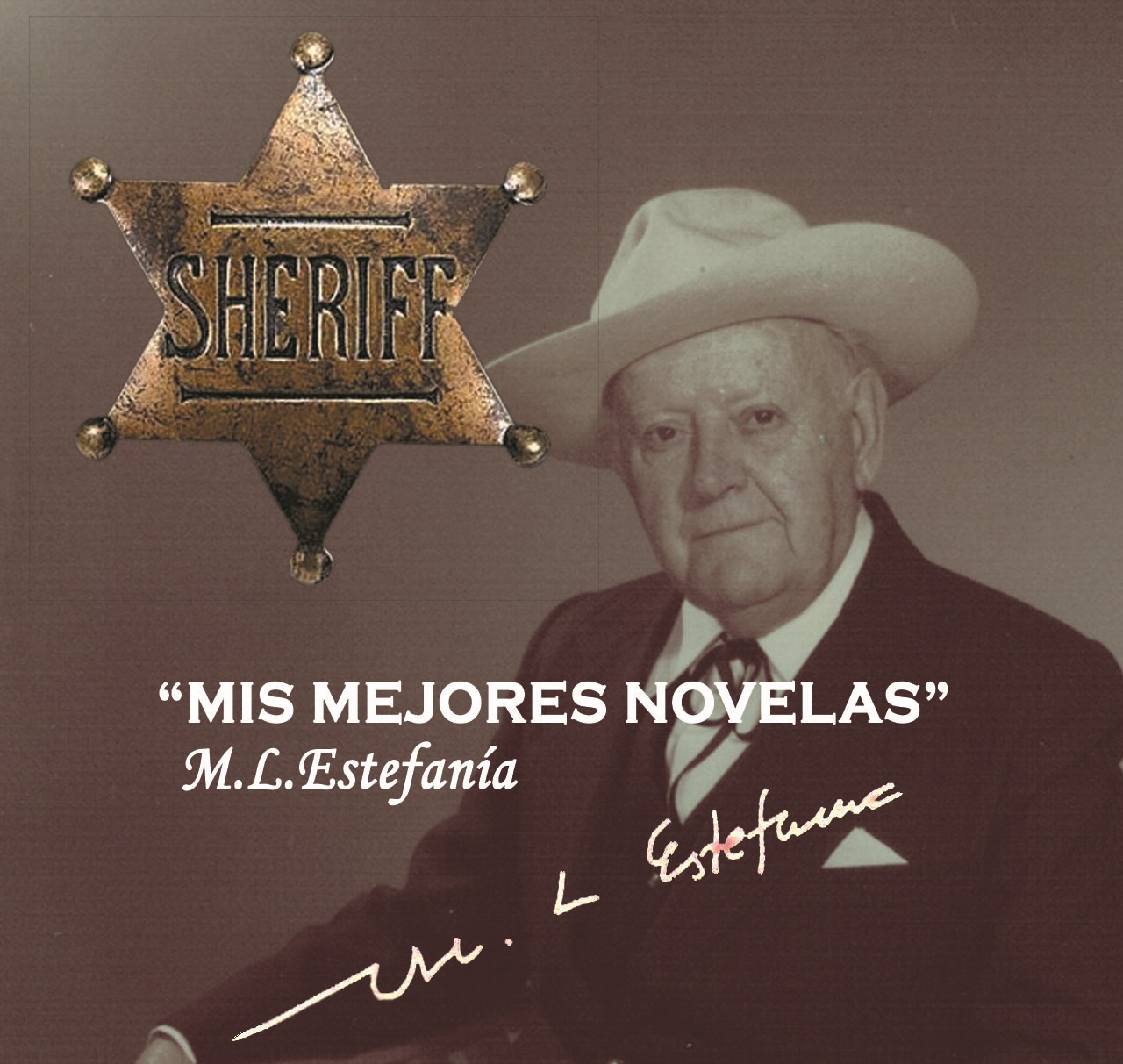MARCIAL LAFUENTE ESTEFANÍA
(M.L. Estefanía)
The author
Marcial Lafuente Estefanía was a writer and industrial engineer, born in Toledo on June 13, 1903 and died in Madrid on August 7, 1984. His popularity came as the author of Wild West novels and , to a lesser extent, science fiction.
His stay in the United States
As an industrial engineer between 1928 and 1931 he toured North Africa and the US working on different engineering projects. There he became familiar with American culture and learned about its history. Pioneers, Native people, sheriffs, outlaws… became part of his imagination, thus he developed a deep passion for the “Wild West”. Historical figures such as Billy the Kid, Pat Garrett (the sheriff who killed him), the lawyer Wyatt Earp, Jesse James and others inspired the imagination of Marcial Lafuente Estefanía.
Once the Spanish Civil War ended and as a consequence of having belonged to the losing army, he was unable to practice his profession. For necessity he abandoned his activity in the engineering sector and dedicated body and soul to writing Western genre novels.
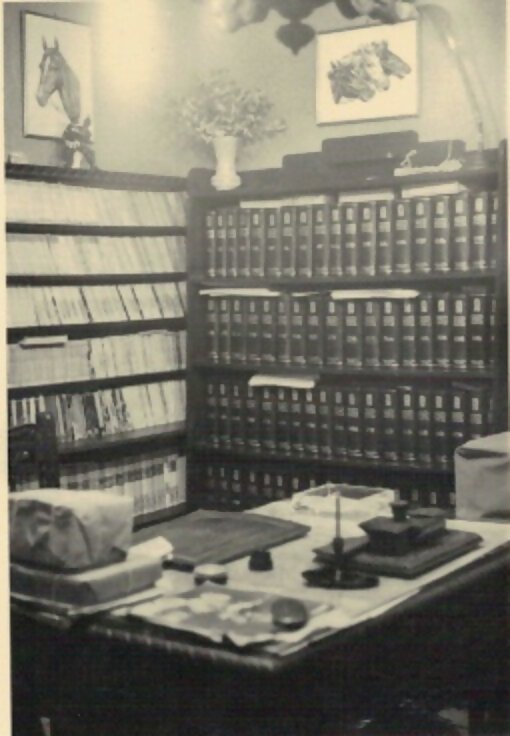
The Spanish Secod Republic
An anarchist of ideas and defender of human and workers’ rights, he enlisted in the CNT, being elected in the Second Republic as a councilor for the municipality of Chamartín de la Rosa (the current district of Chamartín and Tetuán) in Madrid. Here he defended, even endangering his own life, many neighbors, who had been accused for such a trivial reason as being wealthy, having a family member within the Church or being ratted out for a simple neighborhood dispute or just for envy. Don Marcial refused over and over again that these neighbors, accused without any evidence and with bad arts, were imprisoned in the “checas“, those prisons created in the republican zone to detain, interrogate, torture and/or execute the suspected of sympathizing with anyone who did not agree with republican ideals.
It is known that he came to confront Don Eusebio Parra Ruiz, mayor of the Popular Front and leader of that city council. He demanded the formation of a commission of inquiry and accused a comrade of having ordered an execution without evidence, something that logically many of his comrades did not like, who tried to accuse him of being a traitor, without success.
Seeing how events were unfolding, before the civil war broke out, he agreed to leave his councillorship, moving to live in his hometown, Toledo .
The Civil War
Already in Toledo and seeing what turn the war was taking, he decided not to remain impassive and enlisted as a volunteer in the Popular Army on March 5, 1938. A few months later he was appointed “Political Commissioner of the Yébenes Front”, a position that equaled him to a General of Artillery.
During the war, he found himself with practically the same problems that he had had in his time at the Chamartín de la Rosa City Hall. Lafuente Estefanía risked her life to prevent dozens of prisoners and threats from both factions from being murdered from the ranks of her own side, the Republicans, categorically refusing to sign a single death sentence during the duration of the war.
On March 28, 1939, it surrendered to the Francoists in Ciudad Real, when the war was already sentenced.
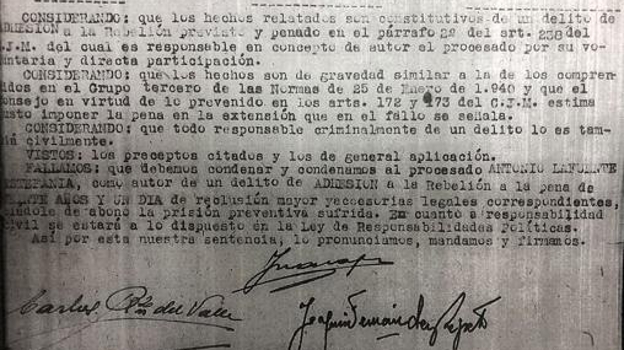
Prosecution and death penalty
He was imprisoned in the Ocaña jail, where he spent two and a half years, experiencing hardships and hunger. On some occasion, he recounted how unscrupulous Falangists stung him like a cow.
During the court martial held in Las Salesas on July 31, 1941, the Francoist prosecutor requested the death penalty for Lafuente Estefanía, after presenting the charges for “Adhesion to the Rebellion”. But there were many favorable testimonies from people related to the Francoist side and others, supposedly similar to his ideas, who testified in his favor, a reason that earned him to escape capital punishment, replacing it with twenty years of imprisonment. However, shortly after, thanks to his good behavior, he was released from prison with a sentence of house arrest.
In an interview that they did to him on ABC in 1978, he expressed: “I have been very afraid, the fear that a man can experience who is told at seven in the evening that they will shoot him at eleven at night …” In those moments I called a sister, rector of a famous ecclesiastical college, who asked me if I was wearing the scapular of the Virgen del Carmen, recommending that “ since I had fought like a bad Spaniard, I should die like a good Christian” . (ABC, Suplemento Blanco y Negro, March 1, 1978)
Among many other things, he was always very critical of the comrades who decided to leave that difficult Spain of 1939. When many of them returned from exile and were treated like heroes, he used to comment: “We, who stayed here, were really the heroes.”
The writer
It was in jail where the engineer, councilor and republican general gave way to the novelist. The prison walls deprived him of his freedom, but in his mind the memories of his time in the US gained strength. Possibly, Marcial Lafuente Estefanía did a therapeutic exercise and as a great connoisseur of the golden age of Spanish literature that his father instilled in him, as well as the war episodes that he experienced during the war, helped him to adapt many of his novels set in the Far West. In this way, he adopted the Western, as a literary genre to narrate stories similar to those he experienced in the years of war, with relentless assassins, shootings, rivalries, escapes, outlaws…
Marcial Lafuente Estefanía wrote where and how she could, using any support. In one of his interviews, he commented: “ I practically started writing on a roll of toilet paper. I had no pages, I had no pen; So I decided to use a pencil and toilet paper”.
His way of writing was based, among many other things, on a piece of advice given to him by the playwright Enrique Jardiel Poncela: « Write for people to have fun, it is the only way to earn money with this ». Marcial Lafuente Estefanía created entertaining stories, without long descriptions and with many dialogues; using very characteristic idioms and fast actions he achieved agile and highly entertaining novels.
In the mid-1940s, Marcial Lafuente Estefanía went to live in Vigo, where he met the director of the Cíes publishing house, Eugenio Barrientos. With him he published a romantic novel, but his true career began in 1943, when he published his first Western novel : “La mascota de la pradera”. These first publications were such a success that Bruguera,the publishing house of Barcelona, contacted with him. Marcial Lafuente Estefanía signed a contract with them and was one of their reference authors. During several decades of relationship, the Bruguera publishing house published countless titles in print runs of up to one million copies per book, according to various sources.
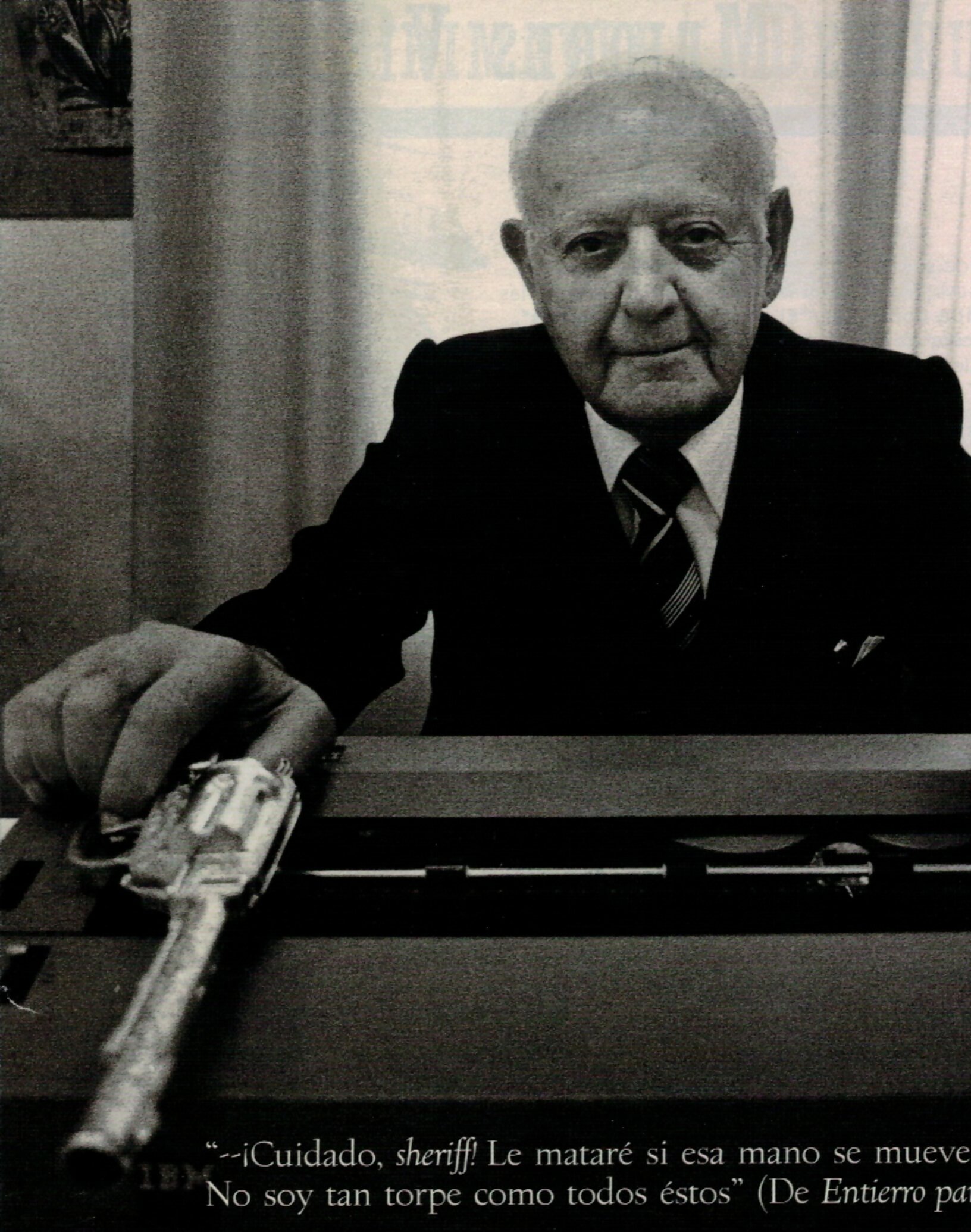
His legacy
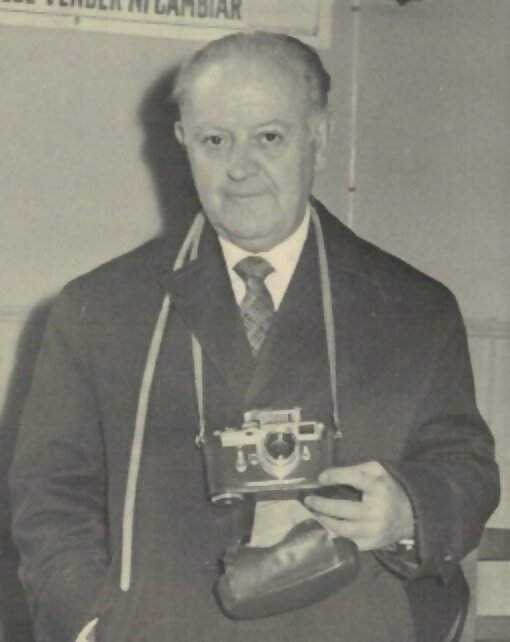
Marcial Lafuente Estefanía’s novels became very popular in Spain in the 1950s and 1960s and also in Latin America and the southern of United States. He has not been exempt from criticism from “academics” due to his mundane style and the quality of his stories. However, great intellectuals of our country (Spain) have not hesitated to declare their admiration for Marcial Lafuente Estefanía; because thanks to him many became fond of reading and books.
The philosopher Fernando Fernández-Savater remembers him as part of his adolescent readings and the singer and songwriter Joan Manuel Serrat mentions him in his song Romance de Curro “el Palmo”.
“Looking for oblivion / he gave himself up to drink / the mus, the pools / and in wasted hours / he read the whole thing / to Don Marcial Lafuente / for not going after him / like a penitent”
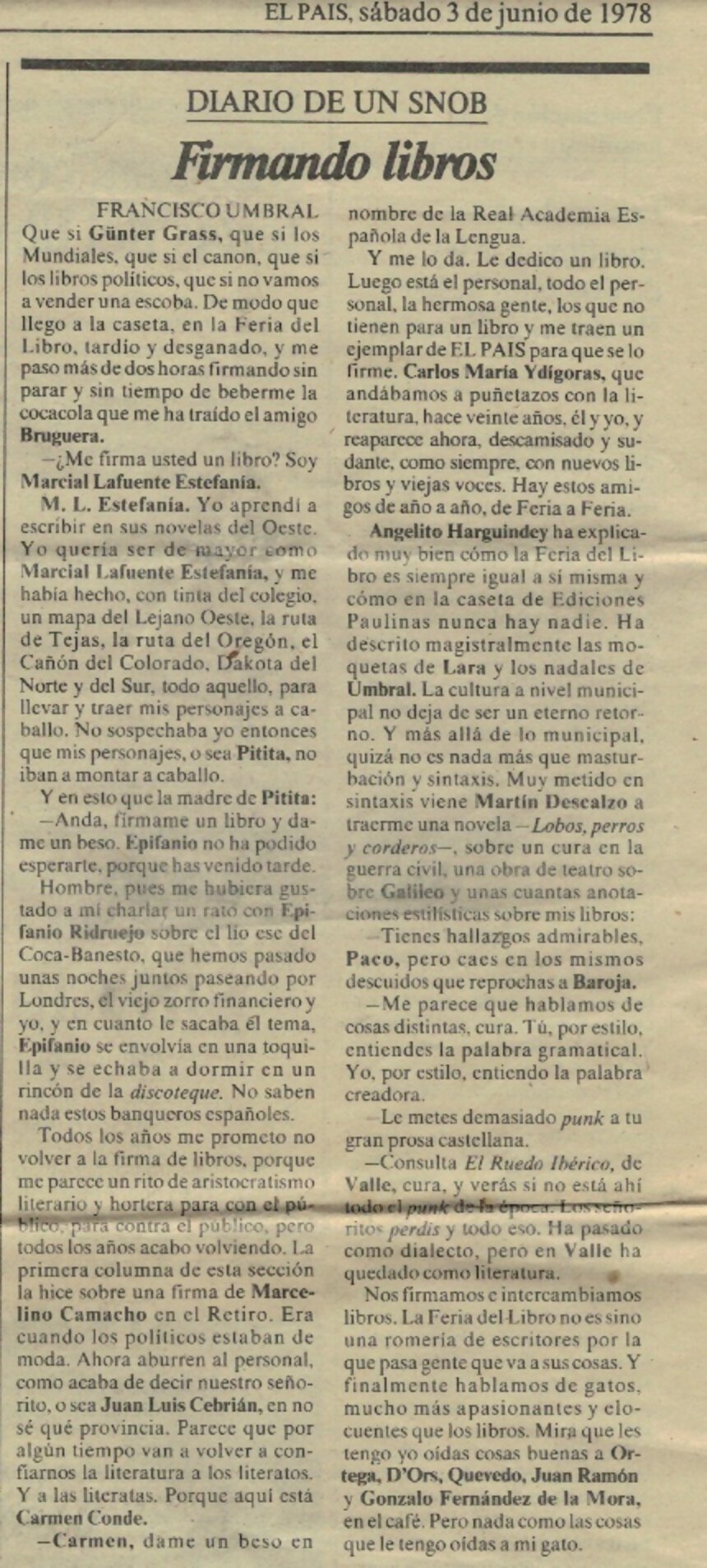
Francisco Umbral himself confessed that he learned to write thanks to Don Marcial:
“I learned to write in his Western novels. I wanted to be like Marcial Lafuente Estefanía when I grew up, and I made myself, with school ink, a map of the Far West, the Texas route, the Oregon route, the Colorado Canyon, North and South Dakota, all that, to take and bring my characters on horseback. I did not suspect then that my characters, that is, Pitita, were not going to ride a horse” ( EL PAÍS, Saturday June 3, 1978)
Don Marcial himself, aware of the criticism, stated in his ABC interview: “ I don’t aspire to the Academy, but I have been read by young and old. What happens is that the elderly are ashamed to admit it “
His popularity reached the big screen. Marcial Lafuente Estefanía was part of the content of 300 MILLONES , a program with maximum audience in the 1970s. On the December 9, 1979 broadcast, the western novelist was interviewed on this program (LINK: 300 million: 09/ 12/1979 | RTVE Play ) by José Domingo Castaño.
In the 1990s, Ediciones B (the former Editorial Bruguera) undertook the publication of some of his most famous novels, such as “Lucha de madereros”, with great acceptance by the public. The need to bring material to the market was so great that his two sons, Francisco and Federico, and much later his grandson Francisco, helped create novels, always published under the signature of the latter’s grandfather.
Marcial Antonio Lafuente Estefanía died in Madrid on August 7, 1984, and was buried in the Almudena cemetery. Currently his remains rest in the Avila cemetery of Arenas de San Pedro, a town that also dedicated a street to him.
Last June 13 was the 120th anniversary of his birth , a fact that was remembered on the “Ser Toledo” radio program (LINK: Manolo Cerdán: “Marcial Lafuente Estefanía was like a father to me” | SER Ávila | Cadena SER ) among others many appearances both television and radio .

